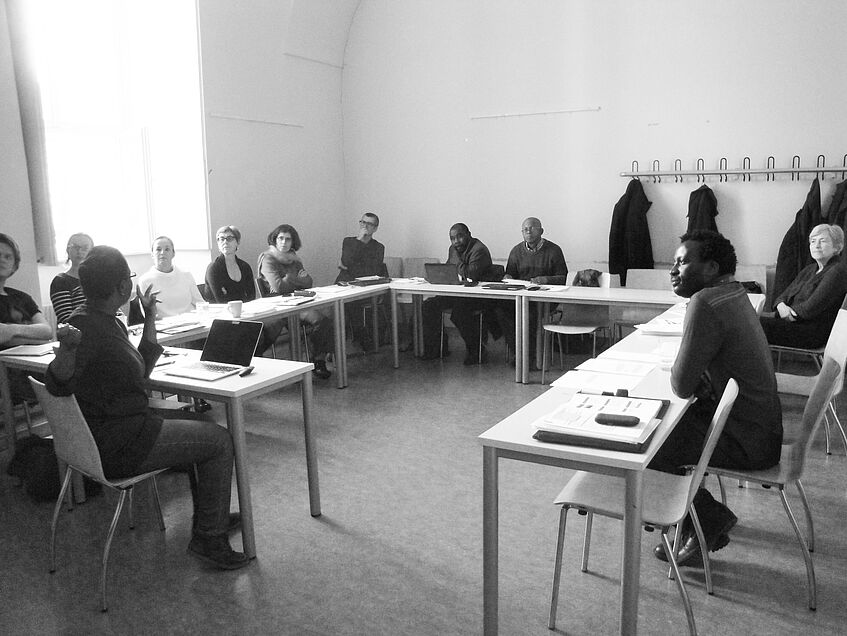Workshop reflections

Workshop: Studying Housing in Interdisciplinary Perspective, 11.11.2017 © Kirsten Rüther
Workshop reflections
Martina Barker-Ciganikova
Some Reflections on Studying Housing in Interdisciplinary Perspective
When compiling the list of workshop participants many months before our November workshop entitled “Studying Housing in Interdisciplinary Perspective”, I would not have guessed how many synergies could emerge between researchers coming from so many different academic disciplines. Scholars from African studies, history, urban planning, architecture, linguistics, literary studies, political science – all putting housing into focus for some three days, all exchanging knowledge and research experience and enriching each other’s perspectives on and understanding of housing. This blog entry is by far not meant as an attempt to reproduce either the individual presentations or the fruitful discussions that followed them. We aim to prepare a separate workshop proceedings publication for that purpose. My intention here is a straightforward reflection on how one learns about housing, what housing means, and why it matters to talk about it.
Would you have guessed that one can learn a lot about housing in (post-)colonial Nairobi through Meja Mwangi’s fictional novels? Or that a simple search for cigarettes in the midst of the old Zanzibar town can lead to academic questions on “doing the city” – by reflecting on landmarks, artefacts, language usage and in particular on the different ways we describe a path or a direction to a stranger. Or that housing projects and schemes implemented in DRC, Zambia, Kenya and Cameroun have so much in common that one gets the feeling (as one participant skillfully put it) that “all the colonizers notwithstanding, it is as if British, French or Belgian graduated from the same school.”
Digging deeper and deeper we discovered that housing has many more dimensions and facets than we originally might have thought. A metaphor of an old house painted several times over and over comes to my mind: some of the colours start to peal off with time, revealing layer by layer both the essence and the wide range of meanings of housing. Is housing a “tool of empire” to exercise absolute control over private, social and sexual relations of inhabitants and dwellers or is it rather an instrument in the hands of the “contained” to “reframe” the imposed policies and practices according to their own ideas and wishes? The factual mismatch between theory (planning) and practice (implementation and building) of housing leaves us assuming that it is both – the attempt to coerce and the mechanism to defend oneself or even to defy the imposition of order.
But how do we make sense of these different perspectives and how do we bring them into dialogue? How do we give voice to all involved actors? And why does it matter? It matters because housing is a lens, through which prevalent social, political, economic and cultural processes at any given time get reflected. It matters because housing is so much more than a mere physical structure – housing is home and shelter, it is a basic need. Housing has its own dynamics; it’s a happening place, it lives. It is a discourse, a policy, a promise, a right, an unfulfilled dream, an object of desire, a component of development and welfare agenda, a pacification instrument, a negotiation process, a means to achieve other ends. Housing is … ? It is an expression of intersections and changing relations between involved actors, be they employers and employees, men and women, owners and subtenants, powerful and powerless. And because it is a lived and built environment, it never works out in reality as it was intended to, to quote another participant here, it gets “messy” somewhere along the way. It is precisely this “messiness” that makes research on housing more challenging but at the same time all the more interesting.
December, 2017
